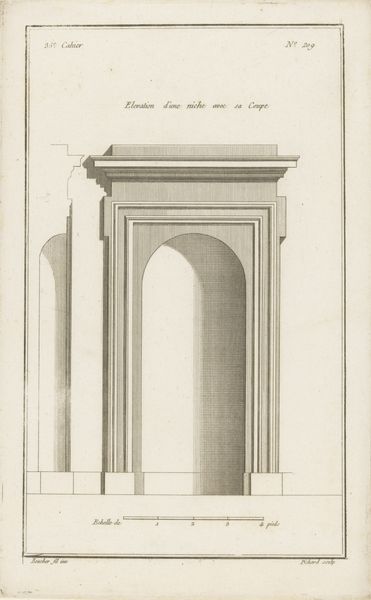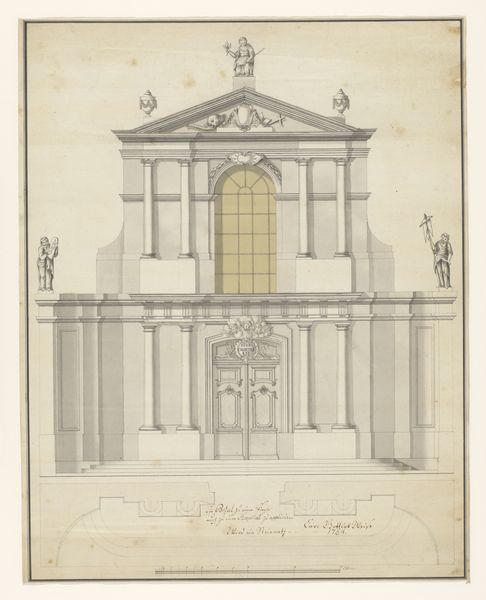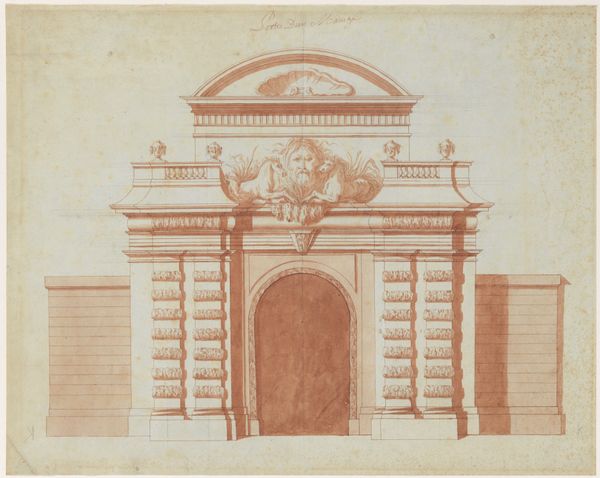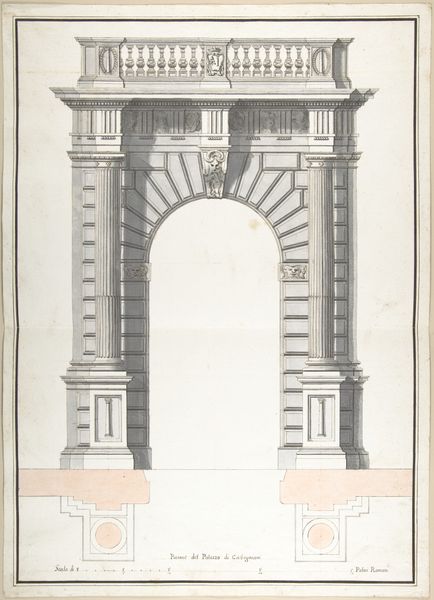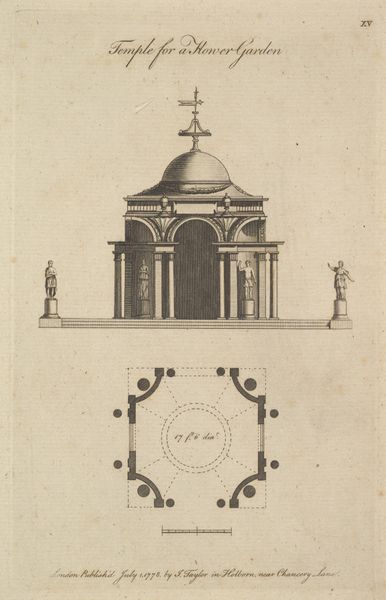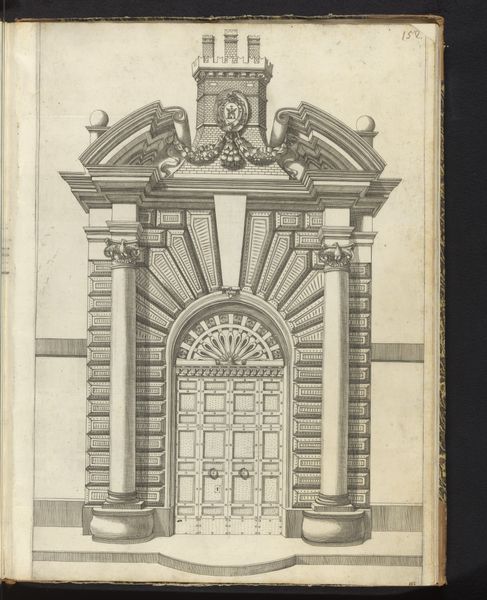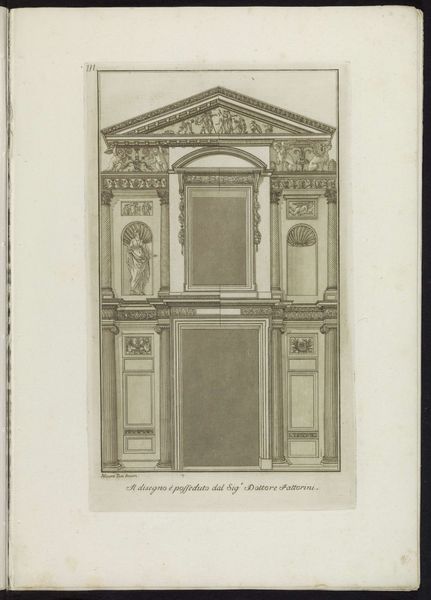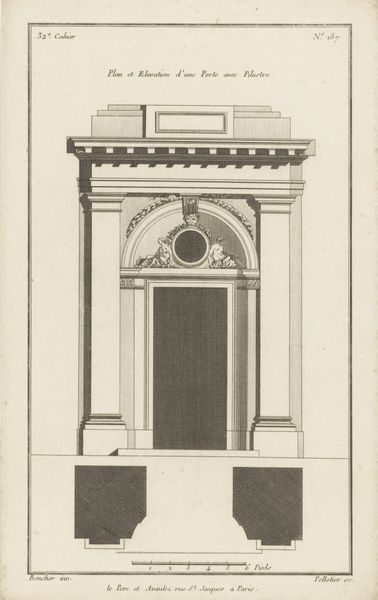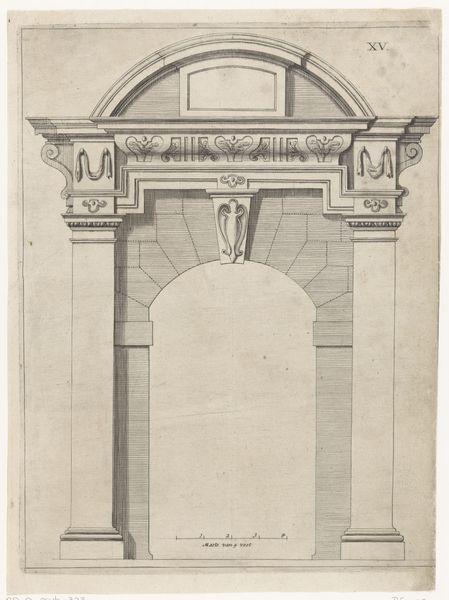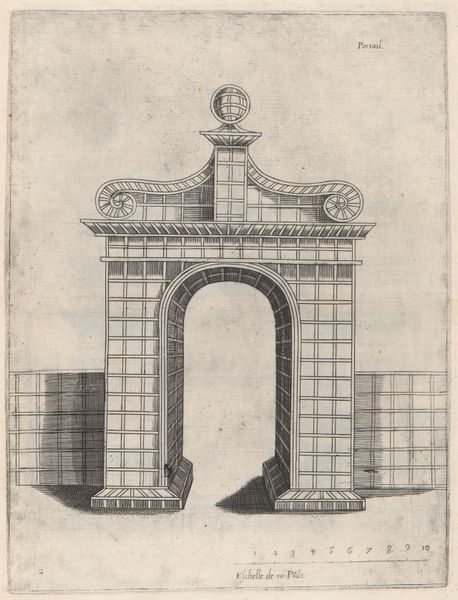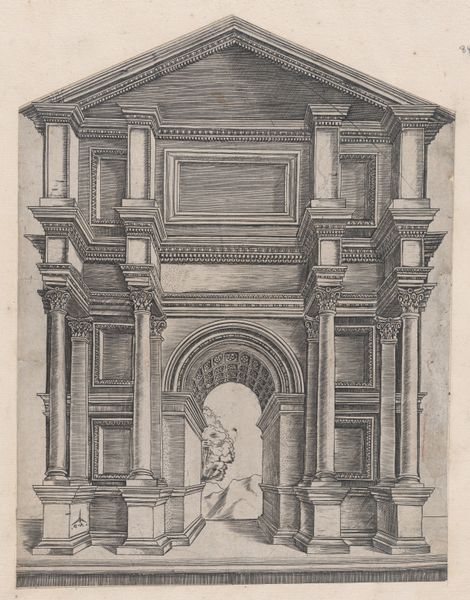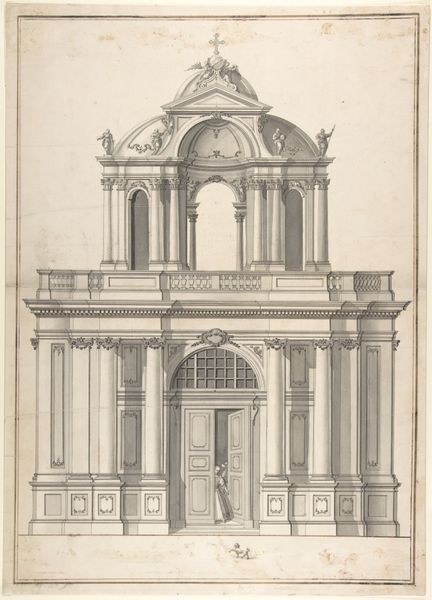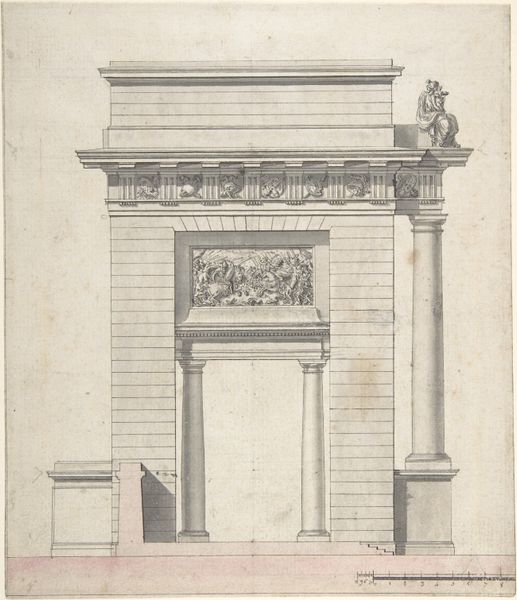
Elevation of a Garden Gate Showing a Palazzo or Villa in the Distance 1710 - 1727
0:00
0:00
drawing, print, architecture
#
drawing
#
baroque
# print
#
landscape
#
architecture
Dimensions: 17-11/16 x 13-7/16 in. (45 x 34.1 cm)
Copyright: Public Domain
Curator: Looking at this drawing, "Elevation of a Garden Gate Showing a Palazzo or Villa in the Distance," created between 1710 and 1727 by Pietro Paolo Coccetti, my first thought is of serenity. The understated palette gives it a dreamlike quality. Editor: It’s certainly visually compelling, and there's something undeniably appealing in its linear clarity. What's fascinating is the suggestion of access, right? A carefully constructed gateway leading to symbols of power and privilege—the villa itself. Who would have passed through this gate? Who was kept outside? The garden gate served not only as a functional entry point but as a symbol of division and social hierarchy. Curator: The symmetry is really remarkable; the use of receding space. Do you think it draws attention to the idea of enforced order? Editor: Indeed. Think about the baroque period and its fascination with control. We see it mirrored in the architectural elements, this constructed vision where nature itself is framed and curated. But is that literal space or perhaps something more psychological—a way of negotiating power dynamics through a manicured landscape. The palazzo in the background becomes less an architectural structure, more a marker of absolute authority, overseeing the perfectly arranged realm beyond the gate. Curator: You make me think about the power dynamics. Do you suppose it’s fair to interpret it as an extension of patriarchal authority during this era, in which access and boundaries were clearly defined for each rank and gender in society? Editor: Exactly! Spaces within spaces. Boundaries reinforcing existing structures, and vice versa. The cool grays emphasize this visual hierarchy. I wonder about the stories unfolding just beyond that gate. Curator: Reflecting on this piece now, the understated color palette and focus on spatial hierarchy really capture both the architectural conventions and also social tensions of the Baroque era, for me. Editor: It's more than just the aesthetic quality or architectonic study, I agree—it encourages us to rethink those boundaries and critically re-imagine narratives from centuries past.
Comments
No comments
Be the first to comment and join the conversation on the ultimate creative platform.
